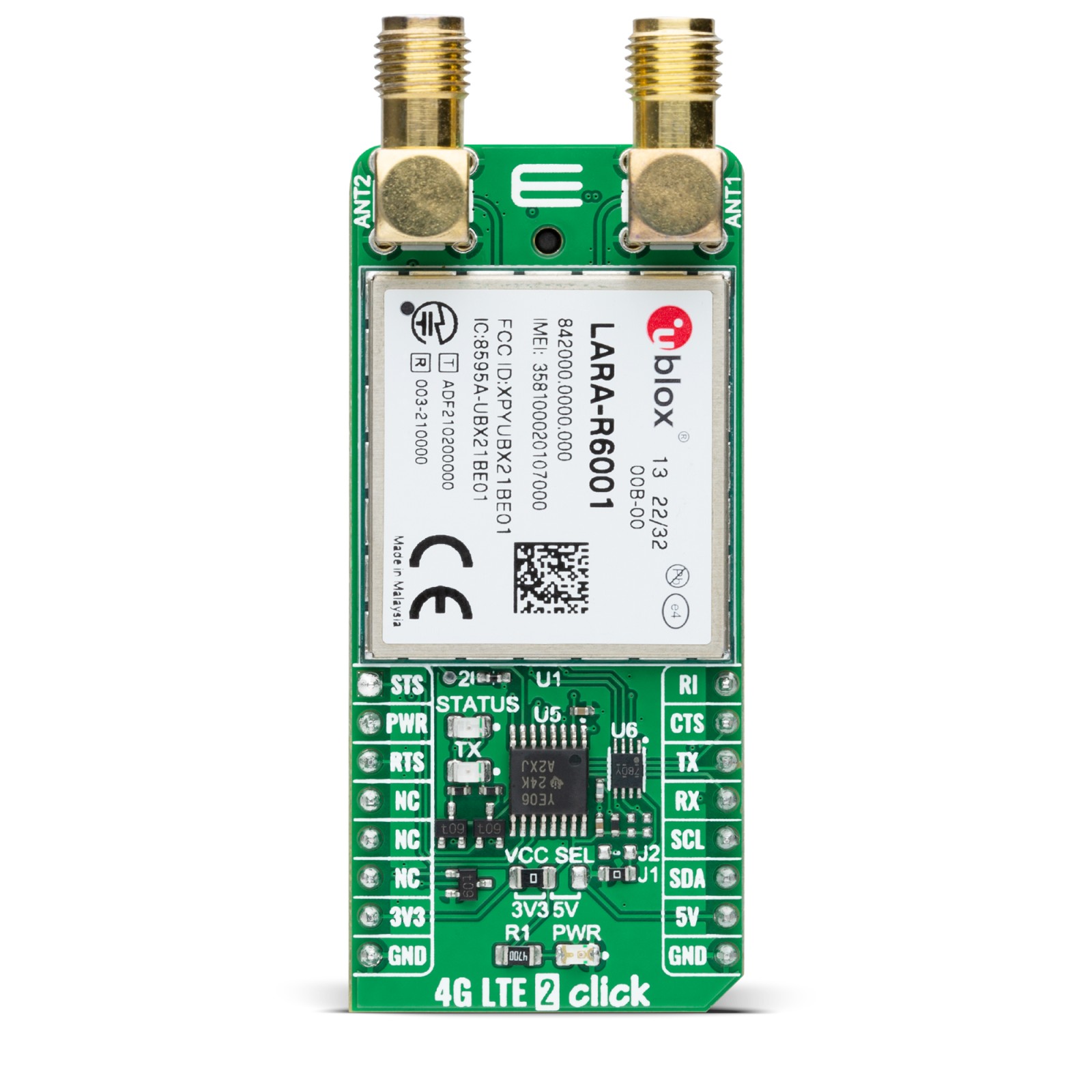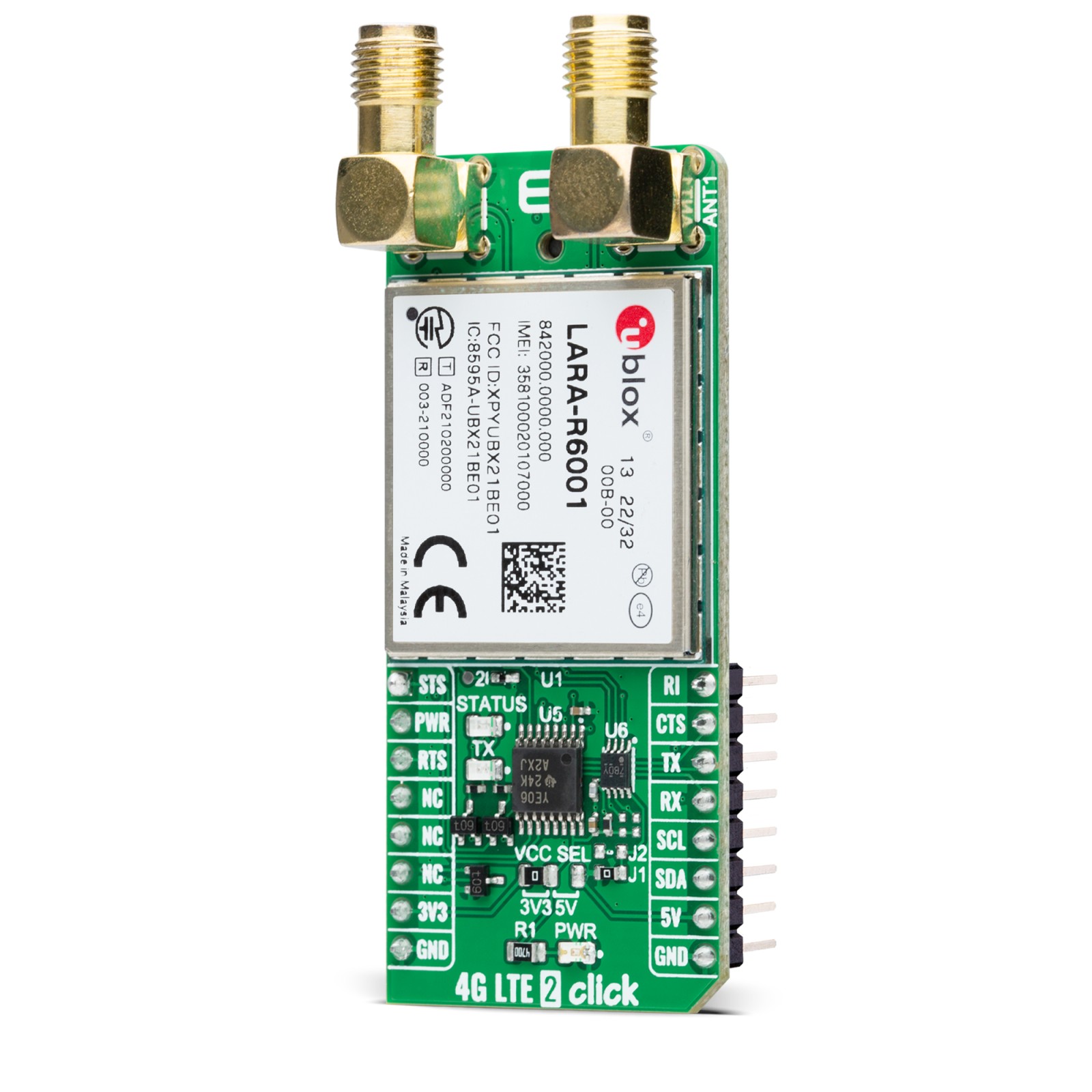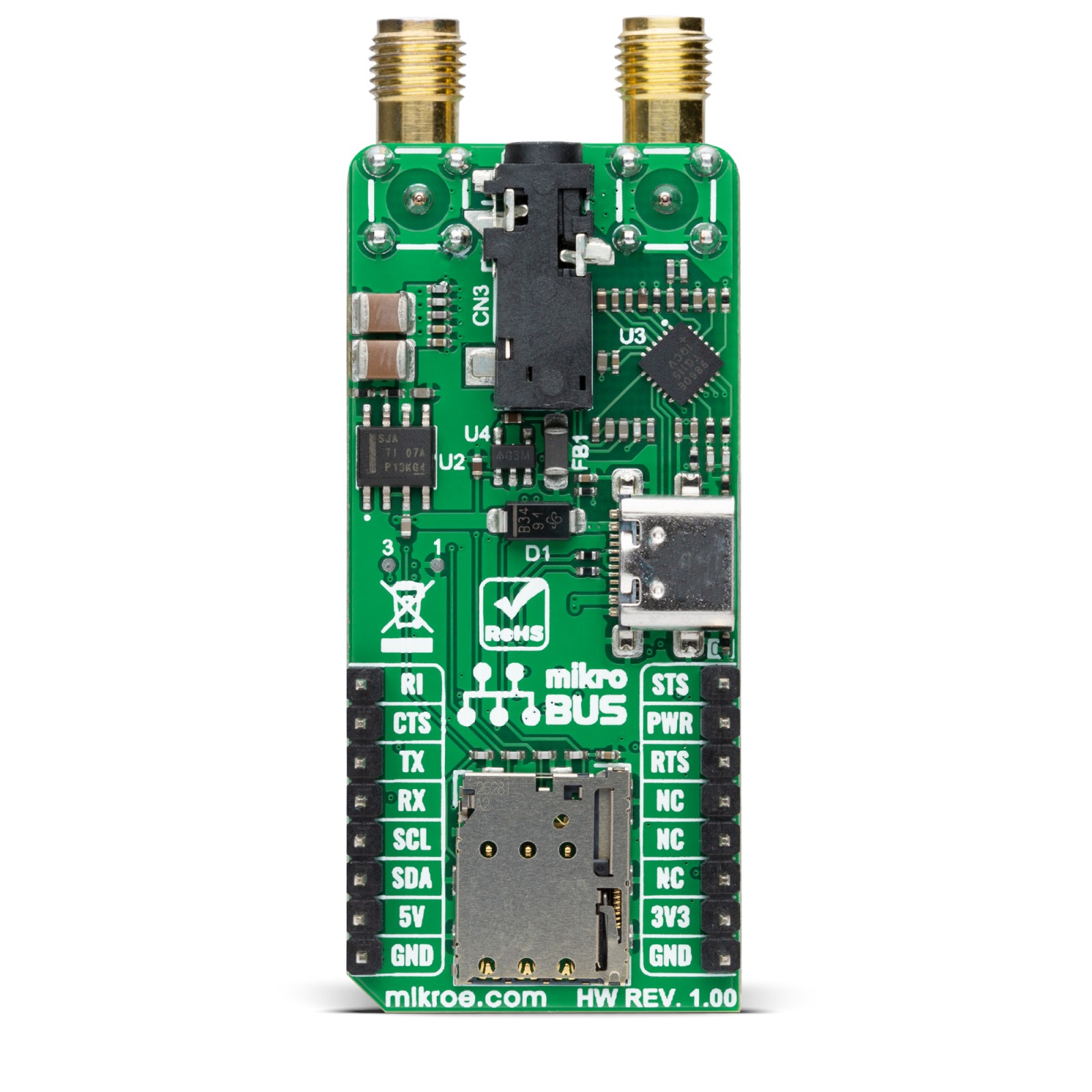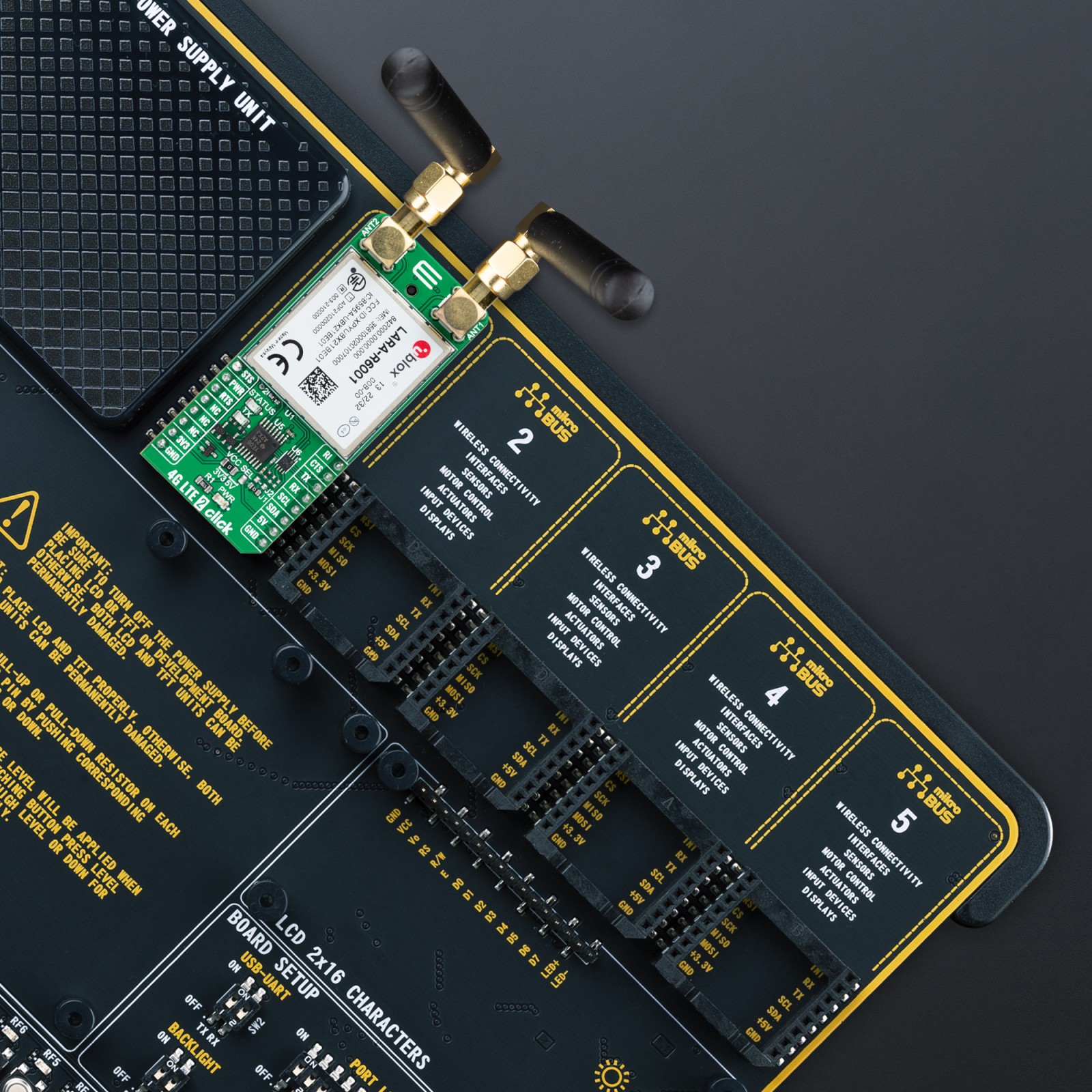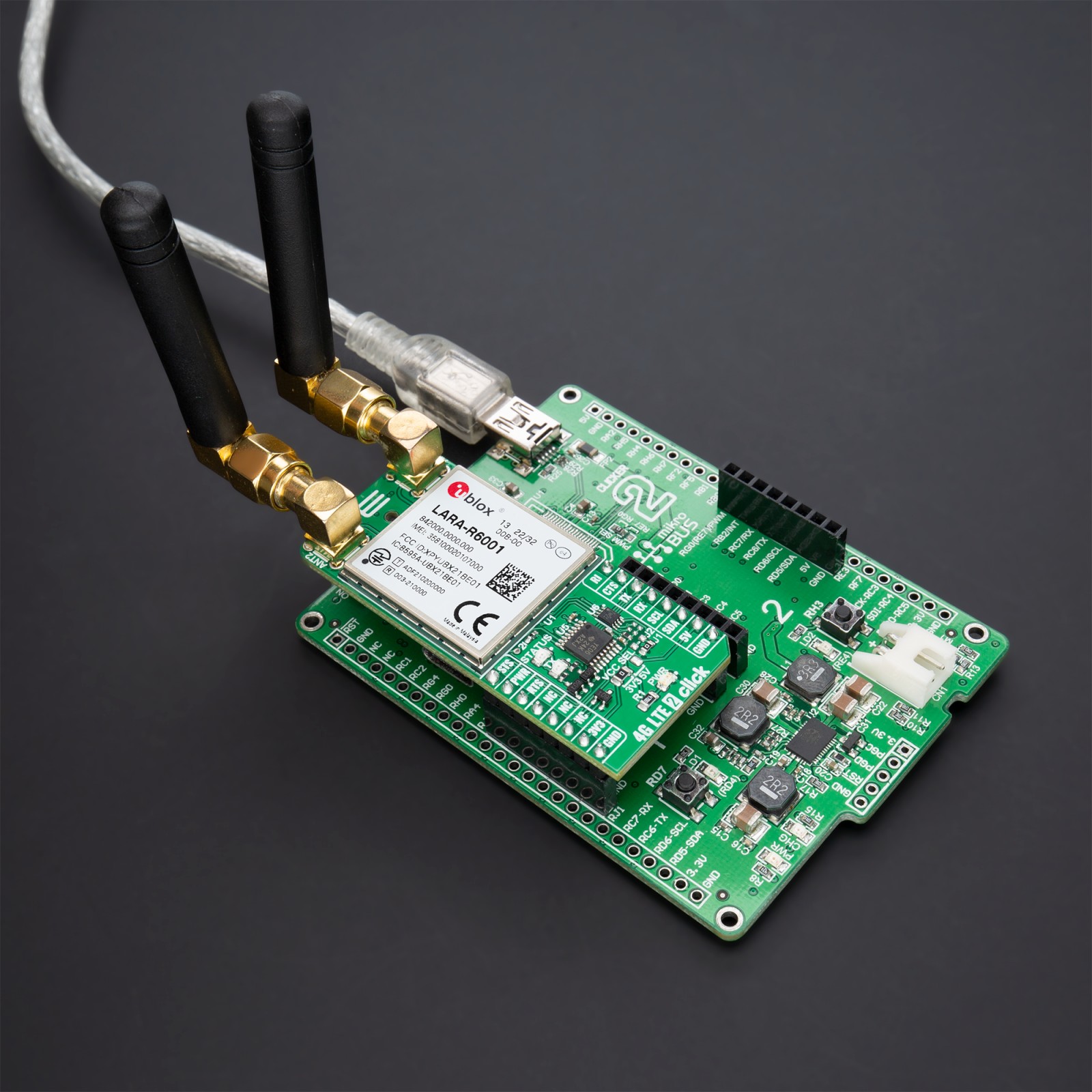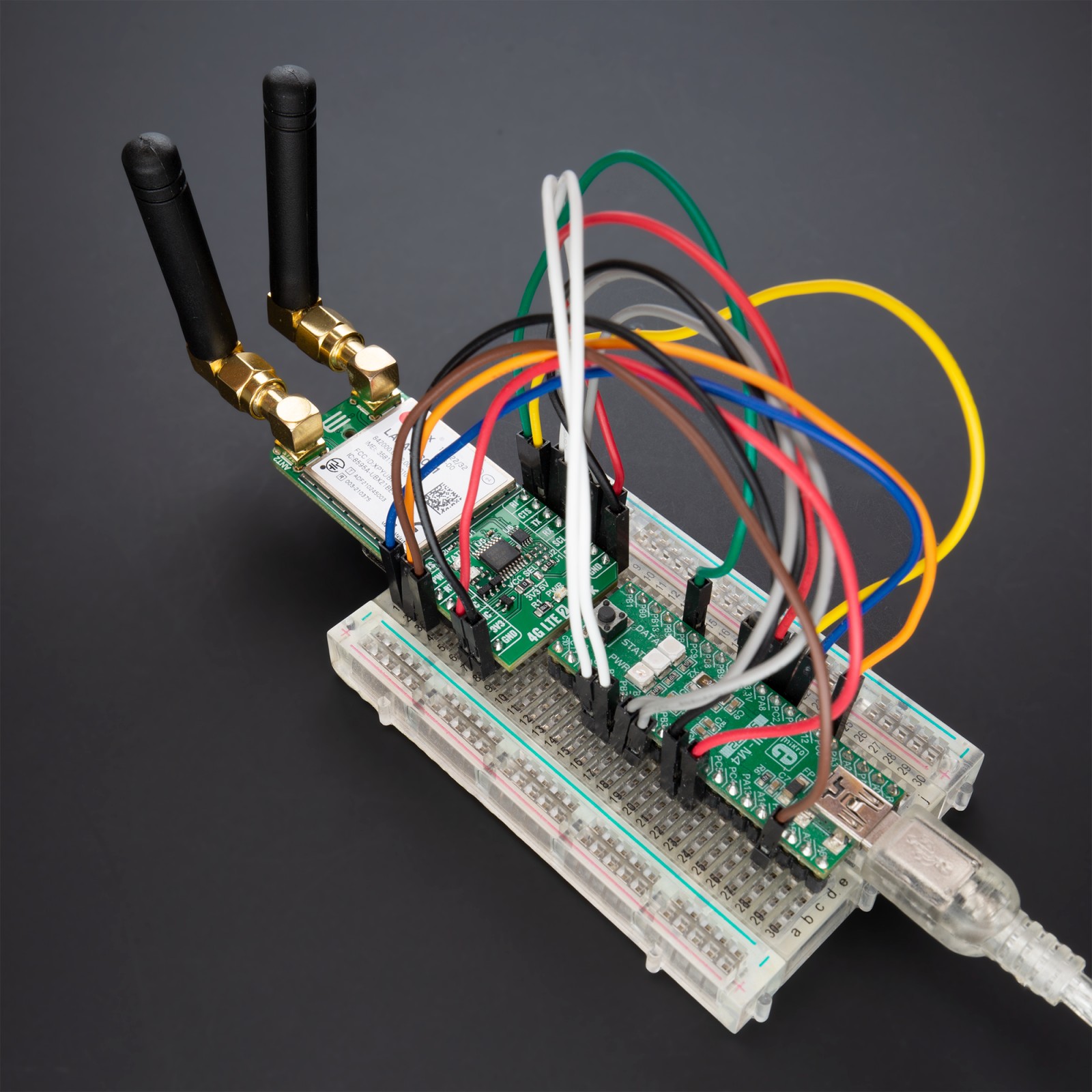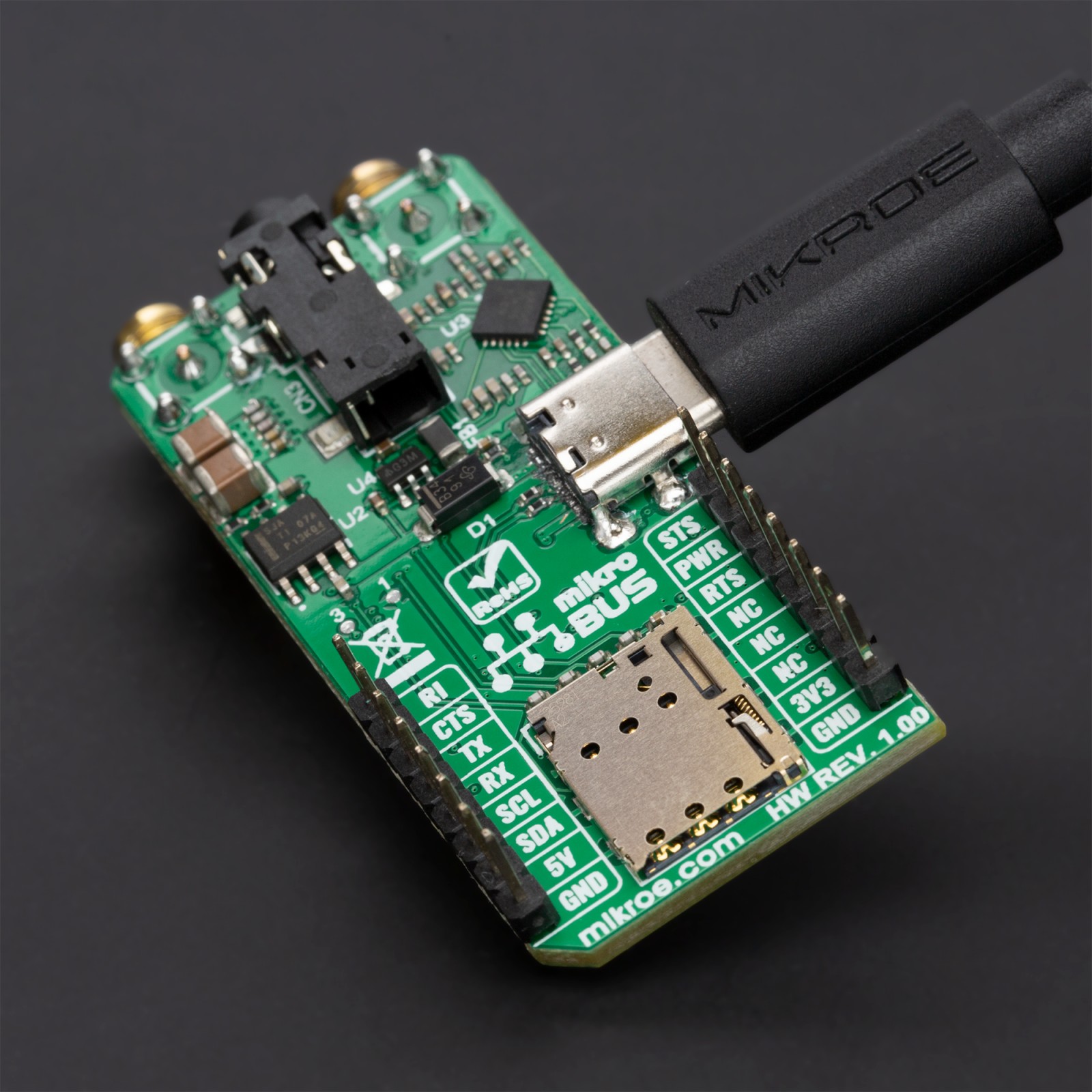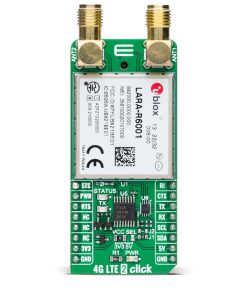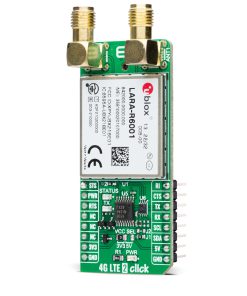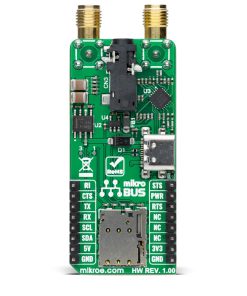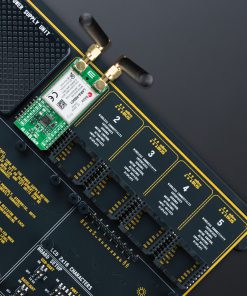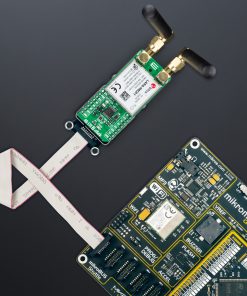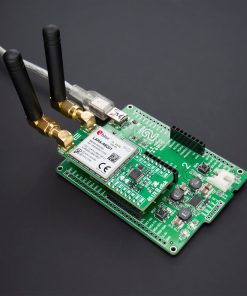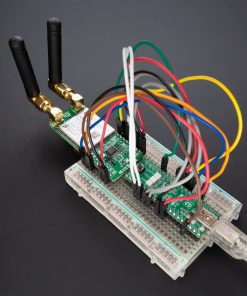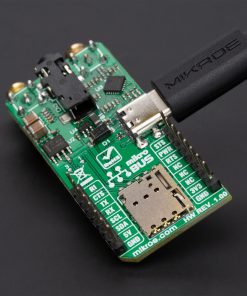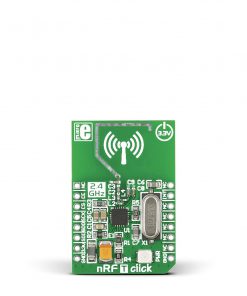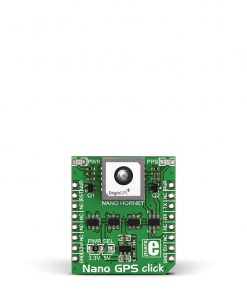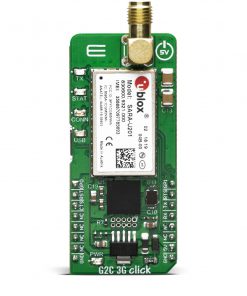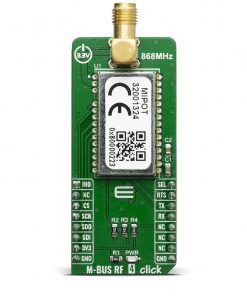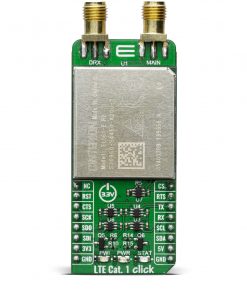Subtotal: R700.00
4G LTE 2 Click – Voice
R2,800.00 ex. VAT
4G LTE 2 Click is a compact add-on board representing a secure-cloud multi-band solution offering universal connectivity and reliable performance. This board features the LARA-R6001 from u-blox, the world’s smallest LTE Cat 1 module with global coverage and a built-in MQTT client, providing a data and voice solution. Equipped with familiar AT commands set over the UART interface, USB interface, and Network and Status indicators, the LARA-R6001 also has a comprehensive certification scheme and multi-band/multi-mode capabilities providing excellent flexibility to support of voice/audio applications. Taking advantage of embedded IoT protocols and security features, this Click board™ is suitable for various applications, such as device management, remote device actions, and secure FOTA updates.
4G LTE 2 Click – Voice is supported by a mikroSDK compliant library, which includes functions that simplify software development. This Click board™ comes as a fully tested product, ready to be used on a system equipped with the mikroBUS™ socket.
Stock: Lead-time applicable.
| 5+ | R2,660.00 |
| 10+ | R2,590.00 |
| 15+ | R2,520.00 |
| 20+ | R2,450.00 |
How does it work?
4G LTE 2 Click is based on the LARA-R6001 from u-blox, a multi-band and multi-mode module supporting LTE Cat 1 FDD and LTE Cat 1 TDD radio access technology (18 LTE bands), with 3G UMTS/HSPA and 2G GSM/GPRS/EGPRS fallback that provides the ideal solution for uncompromised global connectivity. This Click board™ represents a data and voice solution with global coverage and all relevant MNO certifications, offering great flexibility. Versatile interfaces and features make the LARA-R6001 ideally suited for a wide range of applications that require medium data speed, seamless connectivity, superior coverage, low latency, and streaming data such as asset tracking, telematics, remote monitoring, point-of-sale terminals, and more.

The LARA-R6001 module provides Voice over LTE (VoLTE) and Circuit-Switched-Fall-Back (CSFB) from LTE to 3G or 2G radio bearer for audio services – access is via an onboard 3.5mm audio jack. This audio interface is configurable through the AT commands to transfer digital audio data to/from an external device as an onboard audio codec.
This module requires a 3.8V power supply. Therefore, the Click board™ incorporates an integrated buck (step-down DC-DC) converter, the TPS7A7002 by Texas Instruments, which provides a stable 3.8V power supply and is capable of mitigating voltage drops at the input when a high current peak appears (typically at the StartUp of the device). The module Ignition (Power-On) pin, labelled as PWR and routed to the RST pin on the mikroBUS™ socket, enables power to be switched on and off.
The LARA-R6001 communicates with an MCU using the UART interface with commonly used UART RX and TX pins with the hardware flow control pins UART CTS, RTS, RI (Clear to Send, Ready to Send, and Ring Indicator). It operates at 115200 bps by default configuration to transmit and exchange data with the host MCU through AT commands that u-blox provides. Besides the UART interface, the LARA-R6001 also provides the possibility of using the I2C interface as an I2C host, which can communicate with I2C local devices following the I2C bus specifications. This Click board™ is also equipped with a USB type C connector, available for diagnostic purposes only. The module acts as a USB device and can be connected to any USB host equipped with compatible drivers.
Among its used pins, this Click board™ also possesses two additional LED indicators: the yellow LED labelled as STATUS, routed both to the mikroBUS™ AN pin (STS) and the LED, used to indicate the status of the network connection visually; and a red LED, labelled as TX, used to tell the transmitting status of the module.
LTE cellular networks use spatial multiplexing antenna technology, allowing more than one antenna to be used for better reception. For that reason, besides the primary TX/RX antenna, this Click board™ uses a secondary diversity RX antenna, which allows better signal reception. Alongside those SMA connectors, the 4G LTE 2 Click also has a Nano-SIM card slot that provides multiple connections and interface options alongside several test points labelled from TP1 to TP3, enabling easy reboot and testing of the module.
This Click board™ can operate with both 3.3V and 5V logic voltage levels selected via the VCC SEL jumper. This way, both 3.3V and 5V MCUs can use the communication lines properly. However, the Click board™ comes equipped with a library containing easy-to-use functions and an example code that can be used, as a reference, for further development.
Specifications
Type
2G GPRS,4G LTE,GSM/LTE
Applications
Can be used for device management, remote device actions, and secure FOTA updates
On-board modules
LARA-R6001 – LTE Cat 1 module with global coverage from u-blox
Key Features
Universal connectivity, multi-mode, secure cloud, support of voice/audio applications, receive-diversity for reliable performance in difficult conditions, MNO certifications, professional grade, global region, compatible with u-blox services, various interfaces, and more
Interface
I2C,UART,USB
Feature
No ClickID
Compatibility
mikroBUS™
Click board size
L (57.15 x 25.4 mm)
Input Voltage
3.3V or 5V
Pinout diagram
This table shows how the pinout on 4G LTE 2 Click – Voice corresponds to the pinout on the mikroBUS™ socket (the latter shown in the two middle columns).
Onboard settings and indicators
| Label | Name | Default | Description |
|---|---|---|---|
| LD1 | PWR | – | Power LED Indicator |
| LD2 | TX | – | Transmission LED Indicator |
| LD3 | STATUS | – | Status LED Indicator |
| JP1 | VCC SEL | Left | Logic Level Voltage Selection 3V3/5V: Left position 3V3, Right position 5V |
| TP1 | 1 | – | Ground Testpoint |
| TP2 | 2 | – | External Reset (Reboot) Testpoint |
| TP3 | 3 | – | Diagnostic Purposes Testpoint |
4G LTE 2 Click – Voice electrical specifications
| Description | Min | Typ | Max | Unit |
|---|---|---|---|---|
| Supply Voltage | 3.3 | – | 5 | V |
| LTE Operating Frequency Range (Uplink) | 663 | – | 2570 | MHz |
| LTE Operating Frequency Range (Downlink) | 617 | – | 2690 | MHz |
| Operating Temperature Range | -20 | +25 | +65 | °C |
Software Support
We provide a library for the 4G LTE 2 Voice Click as well as a demo application (example), developed using MikroElektronika compilers. The demo can run on all the main MikroElektronika development boards.
Package can be downloaded/installed directly from NECTO Studio Package Manager(recommended way), downloaded from our LibStock™ or found on Mikroe github account.
Library Description
This library contains API for 4G LTE 2 Voice Click driver.
Key functions
-
c4glte2voice_set_power_stateThis function sets a desired power state by toggling PWR pin with a specific time for high state. -
c4glte2voice_set_sim_apnThis function sets APN for sim card. -
c4glte2voice_send_sms_textThis function sends text message to a phone number.
Example Description
Application example shows device capability of connecting to the network and sending SMS or TCP/UDP messages using standard “AT” commands.
void application_task ( void )
{
switch ( example_state )
{
case C4GLTE2VOICE_CONFIGURE_FOR_NETWORK:
{
if ( C4GLTE2VOICE_OK == c4glte2voice_configure_for_network( ) )
{
example_state = C4GLTE2VOICE_WAIT_FOR_CONNECTION;
}
break;
}
case C4GLTE2VOICE_WAIT_FOR_CONNECTION:
{
if ( C4GLTE2VOICE_OK == c4glte2voice_check_connection( ) )
{
example_state = C4GLTE2VOICE_CONFIGURE_FOR_EXAMPLE;
}
break;
}
case C4GLTE2VOICE_CONFIGURE_FOR_EXAMPLE:
{
if ( C4GLTE2VOICE_OK == c4glte2voice_configure_for_example( ) )
{
example_state = C4GLTE2VOICE_EXAMPLE;
}
break;
}
case C4GLTE2VOICE_EXAMPLE:
{
c4glte2voice_example( );
break;
}
default:
{
log_error( &logger, " Example state." );
break;
}
}
}
The full application code, and ready to use projects can be installed directly from NECTO Studio Package Manager(recommended), downloaded from our LibStock™ or found on Mikroe github account.
Other Mikroe Libraries used in the example:
- MikroSDK.Board
- MikroSDK.Log
- Click.4GLTE2Voice
Additional notes and informations
Depending on the development board you are using, you may need USB UART click, USB UART 2 Click or RS232 Click to connect to your PC, for development systems with no UART to USB interface available on the board. UART terminal is available in all MikroElektronika compilers.
mikroSDK
This Click board™ is supported with mikroSDK – MikroElektronika Software Development Kit. To ensure proper operation of mikroSDK compliant Click board™ demo applications, mikroSDK should be downloaded from the LibStock and installed for the compiler you are using.
For more information about mikroSDK, visit the official page.
Resources
Downloads
| Weight | 31 g |
|---|---|
| Brand | MikroElektronika |

 DIGI POT Click
DIGI POT Click  HYDROGEN Click
HYDROGEN Click 